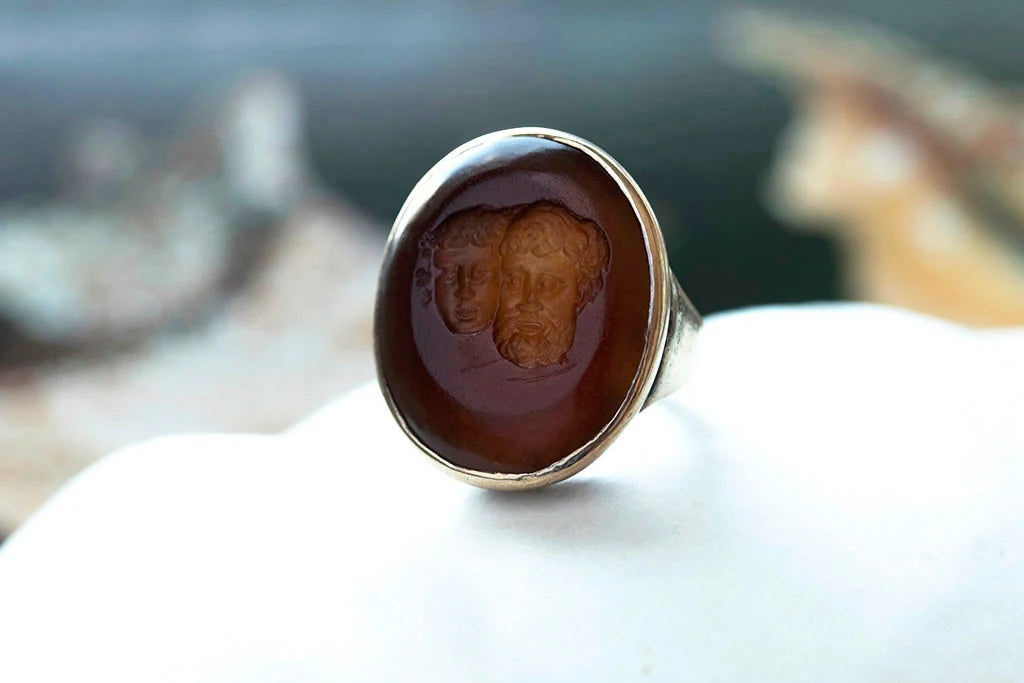
The Captivating Carnelian: A Gemstone Steeped in Medieval Lore
Share
In the enchanting realm of gemstones, there is one that has captured the imagination of people for centuries - the captivating carnelian. This vibrant orange-red gem has a rich history, woven into the fabric of medieval times, and its allure continues to captivate us even today.
Carnelian, derived from the Latin word "carneus," meaning "flesh-colored," has been prized for its striking hues, ranging from deep orange to reddish-brown. This gemstone has been a favorite among royalty, adorning the crowns and jewelry of kings and queens throughout history. But its significance extends far beyond its physical beauty; carnelian has been imbued with a wealth of mystical and symbolic meaning.
In the medieval era, carnelian was believed to possess a range of powerful properties. It was thought to be a stone of courage, imbuing its wearer with the strength to face adversity and overcome challenges. Soldiers would often carry carnelian amulets into battle, believing they would protect them from harm and grant them victory.
But the folklore surrounding carnelian doesn't stop there. This gemstone was also believed to have the power to soothe the mind and promote clarity of thought. Medieval scholars and philosophers would often use carnelian seals or rings to help them focus during their studies and writings. The stone was also thought to have the ability to enhance public speaking and oration, making it a prized possession among politicians and orators of the time.
Beyond its metaphysical properties, carnelian also held significant symbolic meaning in the medieval world. It was often associated with the sun, representing vitality, warmth, and creativity. In some cultures, carnelian was believed to be a stone of fertility, and it was sometimes used in rituals and ceremonies to promote abundance and prosperity.
Today, the allure of carnelian continues to captivate us, with its rich history and enduring symbolism. Whether you're drawn to its vibrant hues or its intriguing folklore, this gemstone is a true testament to the enduring power of nature's creations.
The Enduring Allure of Carnelian
Carnelian's popularity has endured throughout the centuries, with its unique blend of physical beauty and symbolic significance. From the ancient Egyptians to the medieval Europeans, this gemstone has been revered for its ability to inspire and empower its wearers.
One of the most fascinating aspects of carnelian's history is its use in ancient seals and signet rings. These intricate carvings, often depicting intricate designs or symbols, were used to authenticate documents and letters, as well as to serve as a mark of status and power. The durability and vibrant color of carnelian made it an ideal material for these important seals, and the process of carving the stone was considered a true art form.
Carnelian in the Modern World
While the folklore and symbolism surrounding carnelian may have evolved over time, its appeal remains strong in the modern world. Today, this gemstone is prized not only for its beauty but also for its versatility. Carnelian can be found in a wide range of jewelry, from delicate pendants to bold statement pieces, and its warm hues complement a variety of skin tones and fashion styles.
Beyond its use in jewelry, carnelian has also found a place in the world of wellness and self-care. Some believe that the stone's grounding and energizing properties can help to promote balance and well-being, making it a popular choice for use in meditation, crystal healing, and other holistic practices.
Whether you're drawn to the rich history of carnelian or simply captivated by its stunning appearance, this gemstone is a true testament to the enduring power of nature's creations. So why not embrace the allure of this captivating stone and let it inspire you to explore the wonders of the natural world?